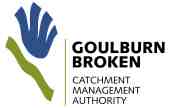All project sites have been chosen through Expression of Interest processes. The Project started off with four project-sites, then quickly added another three sites. All work on these seven sites was completed by November 2013- on time and under budget. Additional sites were then assessed and prioritized in December 2013, with six sites added to the project . Several of the project sites required little or no new fencing, allowing their inclusion in the project. The addition of these extra project sites attests to the interest of local landholders in biodiversity conservation as an important part of sustainable farming.
Site 1: Joblin 2.3 ha. This is an unimproved pasture site, with a mix of introduced and native grasses and herbs. It is fully fenced and has one large yellow Box tree and a mixed local species windbreak along one fence-line. The site will be direct seeded with a mix of indigenous vegetation, to recreate an open woodland.
Site 2: King 6.2 ha. This is an unimproved pasture site, with a mix of introduced and native grasses and herbs. It contains a small stand of Grey Box. It requires complete fencing and will be mechanically direct seeded along the ridge line and upper slopes. Hand planting and direct seeding will be done where the slope is too steep for mechanical direct seeding.
Site 3: Hubbard 50 ha. Theme 2, modified grazing practices, to allow natural regeneration of woodland vegetation.
Site 4: Hubbard 60 ha. Theme 1, revegetation (25 ha); Theme 2, vegetation rehabilitation, no stock grazing (35 ha).
The Hubbard sites are remnant woodland and open pasture on steep hills and gullies. Large cleared patches require rehabilitation. The site is part of a ‘corridor’ that links Mt. Disappointment State Forest to the King Parrot Creek. Predominant species: Long-leaf Box, Broad-leaf Peppermint, Blackwood, Bracken, with some Silver Wattle and Common Cassinia, even Mint Bush near State Forest. Good native grass content, and native ground cover among bush remnants. The site perimeter is partly fenced, but requires ‘internal’ fencing to manage stock access.
Site 5: Granter 7.5 ha. Steep hillside and gullies – ungrazed at present. Predominant species in gullies: Silver Wattle, Lightwood, Blackwood with occasional Yellow Box and Red Stringybark. High native grass content on bare ridges and slopes. Some Patersons Curse needs control. Partly fenced – some needs repair. Importantly, this site supports a population of the Nationally Threatened Striped legless Lizard (Delma impar).
Site 6: Foster 2 ha. This site is an already fenced area dominated by thick swards of native grass, but little woody regeneration. The site was not part of the original project plan, but has now been included. It requires relatively little work and effort to recreate its open-forest/woodland character. Several species of eucalypt will be planted at low density.
Site 7: Watson 11 ha. Although not one of the original project sites, this was too good an opportunity to pass up. The site is downstream and adjacent to the Hidden Valley sites and completes the protected habitat corridor between Mt Disappointment State Forest and the Upper King Parrot Ck valley. The site is a collaborative effort between the Goulburn Broken Catchment Management Authority and this, the Strath Creek Biodiversity Project. The GBCMA Waterways Program contributed the fencing materials and Landcare erected the fence and will coordinate revegetation of the riparian zone.
Site 8: Hubbard 4 ha. This is an already fenced site that requires revegetation and weed control work. It is located on the northern slope of the Three Sisters hills and will form part of the habitat corridor connecting Mt Disappointment State Forest to the King Parrot Creek.
Site 9: Hubbard 3 ha. This small site provides the immediate link between the King Parrot Creek corridor at Coonan’s Reserve and the developing Mt Disappointment corridor across the Three Sisters property. Currently unfenced (on two sides) and requiring revegetation.
Site 10: O’Grady 34 ha.
Site 11: Baxter 7 ha.
Site 12: Richardson 14 ha.
Site 13: Rubenstein 28 ha. This is a large site on the western slopes of the Yea Spur and is part of a large-scale revegetation program on private property. No fencing is required, though the site needs weed control, ripping and revegetation.






Pingback: ‘Seeing the sites’ – Steering Committee tours project sites. | Strath Creek Biodiversity Project